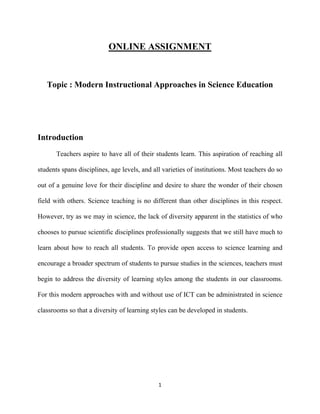1. Modern instructional approaches in science education aim to engage diverse learning styles and encourage more students to pursue science. Concept mapping, collaborative learning, and the jigsaw technique are strategies discussed.
2. Collaborative learning involves grouping students to work towards a common goal and learn from each other. Research shows it improves learning outcomes over individual work.
3. The jigsaw technique divides a topic into parts and assigns a part to each student. Students then teach their part to their group, integrating their knowledge. This encourages cooperation and perspective-taking.











